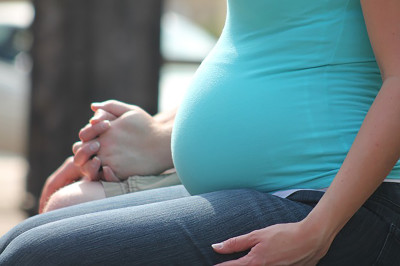 Three researchers at Boston University’s School of Public Health published a study Thursday that found that pregnant women’s perception of fetal size may erroneously influence how they choose to give birth.
Three researchers at Boston University’s School of Public Health published a study Thursday that found that pregnant women’s perception of fetal size may erroneously influence how they choose to give birth.
The professors, Eugene DeClercq, Ronald Iverson and Candice Belanoff, together with Erica Cheng from Harvard Medical School and Naomi Stotland from the University of California, San Francisco, found that only a fifth of expectant mothers with suspected large babies actually ended up delivering babies with excessive birth weights.
“Only one in five US women who were told that their babies might be getting quite large actually delivered infants weighing [more than] 4000 grams,” the study’s conclusion stated. “However, the suspicion of a large baby was associated with an increase in perinatal interventions, regardless of actual fetal size.”
The study, published in the Maternal and Child Health Journal, stated that “group-based therapies that address fears of childbirth … have been shown to help women who request cesareans prepare for normal vaginal deliveries and may be especially relevant for women with [suspected large babies].”
DeClercq said the initial reason for conducting the study revolved around data results gathered from a national survey of women who had given birth between July 2011 and June 2012 called “Listening to Mothers III.”
According to an earlier Listening to Mothers survey, DeClercq said, the majority of women stated they wanted to know of any and all risks associated with their pregnancy.
“It’s a really interesting conundrum as far as this system goes, because on one hand you have mothers wanting to know about a lot of risks, so providers feel like they should tell mothers all these risks,” he said. “At the same time, the net result of it all, that may be a lot of unnecessary intervention because it’s all about the way mothers are thinking about their pregnancy.”
DeClercq added that when mothers were informed their babies were likely to be large, the babies were, on average, only 13 ounces bigger than normal.
“That’s when you might start thinking about getting concerned or needing intervention,” he said. “In most of those cases that wasn’t true and wasn’t going to happen.”
DeClercq said he hopes the study will spark a conversation and make women aware of the “combination of all these facts” in order to understand the true likelihood of having a larger baby and make more informed decisions.
“We need to think carefully about how we assess risk … Maybe not be so much as what we tell them, but how we tell them,” he said. “There is way more threat from a baby being small than a baby being large, and so it may well be more a function of the nature of the communication than the specific piece of content about it.”














